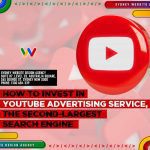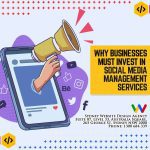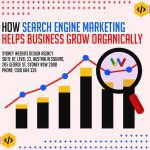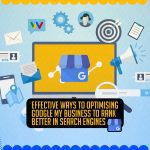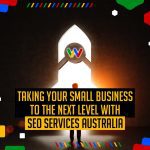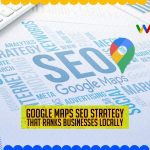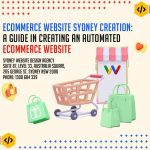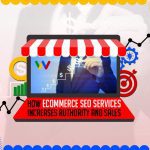Sales Funnel Secrets: Understanding the Psychology of Buyers and How to Influence Them
It is important to understand how consumers think when marketing products and services because consumer behaviour plays a large role in determining the success of a business. By leveraging psychological principles such as Maslow’s hierarchy of needs, businesses can create effective campaigns that connect with consumers on an emotional level and encourage them to make a purchase.
In addition, understanding consumer psychology allows marketers to create persuasive messages that resonate with customers and can be used to gain a competitive advantage.
Moreover, understanding consumer psychology can help businesses identify potential obstacles or resistance points that may prevent customers from making a purchase decision. For example, if customers are hesitant about purchasing due to trust issues, messaging around customer service or product guarantee may help ease their concerns and encourage them to take action.
Similarly, by recognising psychological triggers such as scarcity, social proof, and urgency, businesses can craft powerful messaging that encourages customers to act quickly before it is too late.
In short, understanding how consumers think when marketing products and services is crucial for any business looking to increase sales and build customer loyalty. By leveraging psychological principles and applying key customer insights, businesses can create more effective campaigns that engage customers on an emotional level and guide them through the sales funnel towards a successful outcome.
Introduction
Sales Funnel Secrets and how they can help you sell more of your products and services by understanding how people think when they are making a purchase. If you want to do better in sales, it’s important to know about these secrets of the sales funnel.
Sales funnels are an effective way to have sales teams convert prospects into customers by engaging them emotionally and guiding them through a journey that leads to a purchase decision.
By leveraging psychological triggers such as scarcity, social proof, and urgency, businesses can create powerful persuasive messages that influence customer behaviour.
In this article, we will explore why sales funnels work and how you can use them in your ecommerce business, to increase conversion rates and generate more revenue.
Table of Contents
Introduction to Sales Funnel

A sales funnel is an essential tool for any business that wants to increase its revenue and maximise profits. It is a system of steps designed to capture leads, convert them into customers, and nurture those relationships over time. A well-crafted sales funnel can help you identify potential customers at different stages in the buying process and tailor your marketing approach accordingly.
By understanding how prospects interact with each other throughout their journey, you can craft personalised messages that will encourage them to move further down the sales funnel, important towards conversion. With this knowledge in hand, businesses can create more effective strategies for driving conversions and revenue growth.
From creating content that attracts potential customers to optimising your website for conversions, there are many strategies you can use to improve the effectiveness of your sales funnel. Developing an effective lead generation strategy helps attract new leads and moves them further down the funnel.
Engaging these prospects with personalised messages can encourage them to take action and move closer to conversion. Additionally, A/B testing campaigns and different types of content can help identify which approaches yield the best results for your business. Finally, analysing customer data allows you to better segment prospects and create more tailored experiences that drive conversions.
By taking all of these steps into account, businesses can ensure their sales funnels are optimised for maximum efficiency and revenue growth. With a sales team and the right tools in place, businesses can build stronger relationships with their customers and drive more conversions through the sales funnel starts ever. With a well-crafted sales funnel in place, any business can set themselves up for success.
Parts of a Sales Funnel

Understanding the three parts of a sales funnel is essential for any business looking to increase their profits. A sales funnel consists of three distinct stages: awareness, consideration, and conversion.
The first stage, awareness, involves introducing potential customers to your products or services through different marketing channels like social media or advertising campaigns.
The second stage is consideration, which focuses on converting leads into qualified prospects by providing them with additional information about your offering and answering their questions.
Finally, in the third stage of the sales pipeline – conversion – you focus on turning those prospects into paying customers by addressing any remaining objections they may have and convincing them why your product is the best choice for them. By understanding these key steps in a sales funnel process, businesses can better optimise their strategies to create maximum conversions.
Top of the Funnel: Attracting Potential Customers

The first phase in a sales funnel is to attract potential customers. This is done by introducing your product or service to the market through various channels like paid and organic search, social media, content marketing, SEO and more. It’s important to have an effective strategy for each channel to maximise conversions. You can also capture leads by offering special offers or discounts on your website.
One of the best ways to attract potential customers is through social media marketing. Social media platforms such as Facebook, Twitter, and Instagram give businesses the opportunity to reach a large audience in an effective and cost-efficient way. Through social media, businesses can create engaging content that is intended to capture the attention of their target market.
Another influential step in attracting potential customers is utilising SEO practices. SEO allows brands to increase their visibility within search engine results, ensuring that they are easier to find by users searching for relevant terms. Carrying out targeted email campaigns helps businesses reach a specific audience with tailored messages, while retargeting ads allow them to re-engage with previous website visitors.
Incentives and discounts are also effective at driving customer acquisition, as customers are more likely to be enticed by offers such as free trials or discounts on products and services. Partnering up with influencers or other brands can help boost exposure for both parties, and optimising landing pages allows for better user experience, which will help convert visitors into customers.
Utilising word-of-mouth advertising is another great way to attract potential new customers – offering incentives for referring friends or family will encourage existing customers to spread the word about your business.
Investing in paid ads through networks like Google Ads can also be beneficial in driving customer acquisition, while storytelling can help build relationships between your brand and its target market. Aiming for consistency across all platforms will ensure that you’re always putting forth a professional image that resonates with your desired customer base. Incorporating user-generated content into your strategy will make the brand more relatable, while participating in relevant online forums and communities can further increase visibility among target audiences.
Developing mobile apps or optimising websites for mobile devices should also not be overlooked when aiming to engage potential customers on a deeper level, utilising live-streaming video content on popular platforms is another great way to capture people’s attention as well.
Analysing performance metrics regularly can provide insight into what strategies are working best, so adjustments can be made as needed.
Middle of the Funnel: Nurturing Leads

Once potential customers are aware of your product/service, you need to convert these leads into qualified prospects who are interested in finding out more about what you offer. To achieve this, it’s significant to provide additional information that addresses any questions they may have, as well as clear and concise descriptions of your product features, advantages, and benefits. You can also use email campaigns to further engage with qualified leads and qualify them into prospects.
Tips to Effectively Nurture Leads
1. Get to know your customers: It’s important to understand who your leads are and what they require from you. Research their interests and preferences, then use that knowledge to create content specifically tailored for them.
2. Send out relevant offers: Make sure your offers cater to the needs of your target audience. Whether it’s a free trial or discounts on products, make sure the offers are something people would actually be interested in.
3. Personalise Your Content: When creating content, try to make it as personalised as possible. This means adding in customer names and other personalisation features, so readers feel like the content is written just for them.
4. Automate Your Nurturing Process: Using automation can be a great time saver when it comes to nurturing leads. Set up automated emails and other messages that are triggered when prospective customers take certain actions, such as visiting your website or clicking on an email link.
5. Utilise Social Media: Leveraging social media is one of the best ways to engage with potential leads. Focus on building relationships with people who may be interested in what you have to offer and share relevant content regularly, so followers will stay engaged.
6. Monitor Your Progress: Make sure you’re monitoring the progress of your marketing team to lead nurturing campaign and adjust your strategy as needed based on the results you see. Try different tactics, measure their effectiveness, and then use those insights to refine your strategies going forward.
7. Follow Up: Don’t forget to follow up on leads that have expressed interest in your products and services. A simple “Thank You” email, or a short phone call can go a long way towards building strong relationships with potential customers.
By utilising these tips, you can effectively nurture leads and turn them into lifelong customers for your business. With the right strategy, lead nurturing can be an invaluable tool in helping to generate leads, build customer loyalty and boost sales.
Bottom of the Funnel: Closing the Deal

The final stage in a sales funnel is converting prospects into paying customers. This involves addressing any remaining objections they may have about purchasing your product or service and providing assurances that it’s the right choice for them.
You can encourage conversions by offering discounts or other incentives, personalising messages based on customer needs, or offering free trials, so they can experience your product before they buy. Once you understand each step in this sales process well, you’ll be better equipped to create an effective strategy for increasing your sales.
By understanding the three stages of a sales funnel, businesses can optimise their strategy and maximise their profits. This process requires tracking customers at each stage and using effective tactics to guide them through the more well-defined sales funnel, so they eventually convert into paying customers. The result is increased ROI and improved customer retention. With an optimised sales funnel in place, you can ensure that your business is always making the most out of its sales and marketing efforts, too.
Why Do Brands Fails to Close the Deal?
One of the most common reasons why consumers do not close the deal with brands or services is because of a lack of trust. Consumers need to feel that the company they are doing business with can be trusted and will provide them with a quality product or service that meets their expectations.
Another reason why consumers might hesitate to close the deal is due to a lack of information. In today’s digital age, people have access to vast amounts of research and reviews on products, services, and companies. If they don’t find enough information about the brand or service, it can make them second-guess their decision to purchase.
Price is also an important factor in whether someone decides to buy from a particular brand or service. Many times, people are willing to pay more for better quality, but when offered two similar products at different prices, they tend to go with the cheaper option. Additionally, if there are too many hidden costs associated with a product or service, then it could dissuade customers from making a purchase as well.
Lastly, customer service plays an integral role in whether consumers choose one brand over another. If people feel that they are being treated poorly by customer representatives or experience other issues such as long wait times and unhelpful answers, this could cause them to reconsider doing business with that particular company.
Measuring and Optimising Your Sales Funnel

Once you have identified the issues that are likely causing potential customers to hesitate and not close the deal, it is important to measure and optimise your own sales funnel too. This involves understanding the potential customer’ journey, analysing their behaviour on your site or app, tracking their interactions with your emails and campaigns and any other methods used to engage potential buyers.
By measuring key performance indicators such as conversion rates, average order value, cost per acquisition and more, companies can identify where issues lie in their sales funnels. They can then adjust their strategies accordingly or create new campaigns or messaging to better meet the needs of consumers.
Overall, understanding why people don’t close the deal is essential for a company’s success. By identifying the potential issues and measuring key sales performance and indicators, companies can create a more efficient and effective sales funnel, that leads to higher conversions and customer satisfaction.
By optimising your sales funnel with these insights, you and sales reps will be able to make informed decisions on improving your customer journey, increasing conversion rates and ultimately driving more sales. This in turn allows you to provide better value to customers while also growing your business. With this combination of strategies, a sales rep of any company can ensure their success in closing deals and maximising profits.
Sales Funnel Secrets Frequently Asked Questions

What is a sales funnel?
What are the key elements of a successful sales funnel?
How can I use data to improve my sales funnel?
What types of metrics should I track in my sales funnel?
How can I optimise my sales funnel?
Some strategies that may help include creating personalisation campaigns aimed at different target audiences, using social media platforms to reach new prospects, experimenting with different CTAs, segmenting customers based on their characteristics, setting up an automated email drip campaign, offering incentives such as discounts or coupons, A/B testing landing pages or emails, and utilising remarketing techniques such as retargeting ads or abandoned cart notifications for repeat visitors.
How can funnel experts help my business?
Funnel experts specialise in creating and optimising sales funnels tailored to your target market. They understand the nuances of converting prospects and can design sales pages that resonate with your audience.
By leveraging their funnel secrets, you can attract more visitors and ultimately make more money by turning leads into loyal customers.
Why is it important to have your own funnel?
Having your own funnel allows you to control the marketing funnel process and tailor it to your specific target market. It ensures that every step, from the initial blog post to the final sales page, is aligned with your business goals.
By addressing your customers’ pain points effectively, your funnel can lead to more sales and a higher return on investment.
Actionable Steps for Mastering the Sales Funnel

1. Awareness
Actionable Steps for Mastering the Sales Funnel
2. Interest
Connect with potential customers by nurturing leads through targeted campaigns, email marketing, and showcasing customer success stories.
3. Consideration
Demonstrate the value of your product or service through pricing packages and detailed information about how it can benefit them directly.
4. Conversion
Make the purchasing process easier by providing clear payment options, helpful customer support team members, and enabling the purchase journey to be completed quickly and securely. Thus, a user-friendly landing page is indispensable for higher conversion rates.
5. Loyalty
Strengthen customer loyalty by offering discounts on repeat purchases, personalised rewards, and regular communication with customers.
6. Advocacy
Encourage customers to become advocates of your product or service by leveraging referral programs and creating user-generated content.
7. Retention
Increase customer retention with a combination of customer feedback surveys, follow-up emails, automated retargeting campaigns, and loyalty programs. This will help keep your new and existing customers more engaged, while also helping them stay loyal over time as they continue to make purchases from your business.
8. Measurement
Monitor the performance of your marketing funnel and make necessary adjustments to ensure that it is working as efficiently as possible. Track customer journey data, conversion rates, and other key metrics to identify areas where improvements can be made. With proper analysis of this data, you can gain valuable insights into how to optimise your sales funnel for maximum results.
Mastering the sales funnel stages requires a profound understanding of customer behaviour and psychology. By using actionable steps such as developing targeted content for each stage, creating personalised experiences for customers, and using data-driven insights to inform decisions about pricing and messaging. You can increase your chances of success in converting leads into paying customers.
With these strategies in place, businesses will be able to streamline their marketing and sales efforts and funnels while increasing conversions at every step along the way. Utilising effective marketing tactics is key when it comes to driving more revenue from your business’s online presence, and with the right plan in place, you are sure to see results quickly!











